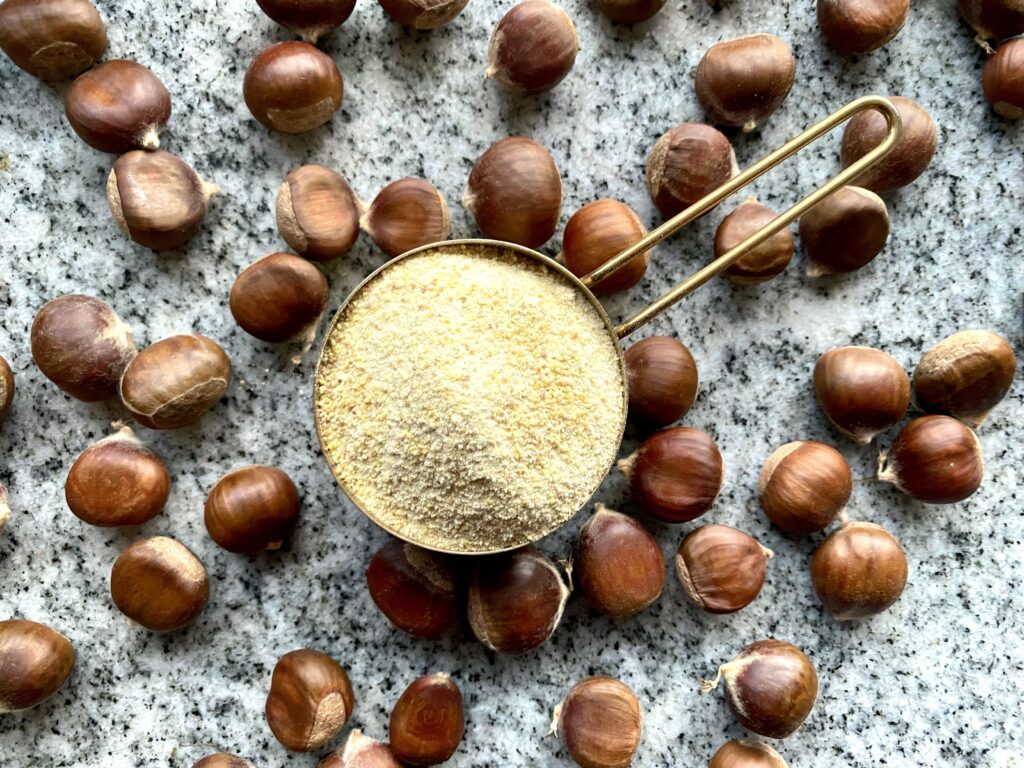Chestnut flour is a great gluten-free alternative to wheat flour and can be used similarly to other nut flours. For many recipes, replacing half of the wheat flour should work well and add a pleasant sweet, nutty flavor to your baked goods.
Or use the flour to make this delicious chestnut cake with pan-roasted pears.

Chestnut Flour Recipe
Ingredients: Whole, fresh chestnuts
Process:
- Use a serrated knife to cut an X onto each chestnut
- Place prepared chestnuts on a baking sheet and bake at 400 F for 20-25 minutes until the nuts have opened.
- Once the chestnuts are cool enough to handle, remove the shells and papery skins to reveal the clean nut. As the chestnuts cool, they will become more difficult to peel. If peeling becomes too challenging, return the pan to the oven to re-warm them.
- Roughly chop chestnuts into smaller pieces, at least ¼ of the original size. The smaller they are chopped, the more quickly they will dry.
- Spread chopped chestnuts on a dehydrator tray and dehydrate at 105 F for 12-24 hours, depending on the size of the pieces. They should not have any moisture remaining when they are ready.
- Place chestnuts in a blender or food processor. The dry blade attachment for a Vitamix works well for this step. Process at a high speed until a fine flour is created.
- For the best results, sift the flour through a fine mesh sieve and return larger pieces to the blender to process further.
Chestnut flour can be stored in the freezer for about six months.
Christina Marbury is the Marketing Director for Taste the Local Difference.
